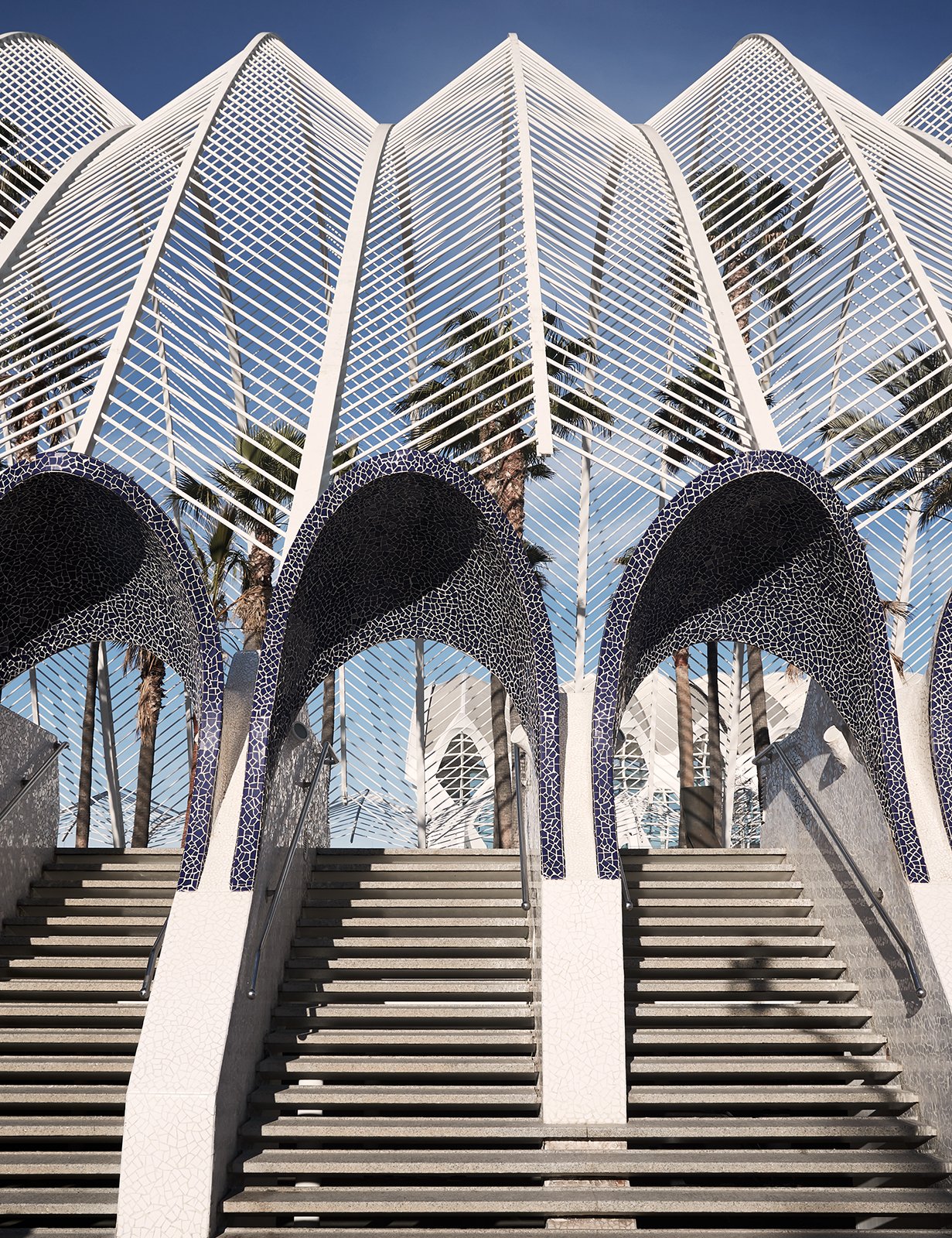City of Arts and Science
Category: Architecture
Location: Valencia, Spain
Visiting Valencia’s City of Arts and Sciences is a transformative experience, the sheer size and scope of the project almost impossible to take in, and the architecture not easy to date. Designed by Santiago Calatrava and Félix Candela, the project began the first stages of construction in 1996, inaugurated two years later with the opening of L’Hemisfèric. The building is meant to resemble “the eye of knowledge” and is the centrepiece of the area. Its design resembles an eyelid that opens to access the surrounding water pool.
The project was initially budgeted at €300 million but has expanded three times the initial expected cost, and so for many locals, it’s not only a place to enjoy but also a symbol of corruption and money laundering. The Museu de les Ciènces Principe Felipe is an interactive museum that resembles the skeleton of a whale, while L’Umbracle is an open structure enveloping a landscape walk with plant species indigenous to Valencia (such as rockrose, rosemary, lavender, bougainvillaea, and palm trees). It also harbours the Walk of the Sculptures, an outdoor art gallery. The plants were carefully picked to change colour with each season.
The city regularly attempts to draw visitors to L’Oceanogràfic, an open-air oceanographic park, which has been repeatedly criticised for its inhumane treatment of the animals and fish that live here in captivity. It’s a beautifully designed torture chamber and it’s well advised to not contribute to it financially. Instead, continue to Palau de les Arts Reina Sofia, an opera house and performing arts centre dedicated to music and the performing arts. The Montolivet Bridge is a concrete road bridge that crosses the dry Turia riverbed, while L’Àgora is a covered plaza for concerts and sporting events and the latest addition to the ambitious project. The final part, Valencia Towers, is yet to be built, due to the already enormous amount of money that has been spent.
The area might look like a drastic departure from the more traditional style of the rest of the city, but there is a subtle clue that ties the contemporary architecture with the surrounding neighbourhoods – trencadís, a technique of broken tile mosaics, is used on many of the buildings’ exterior surfaces. It’s an ancient tradition typical of the region and connects the city’s most recent development to its long and rich history.












